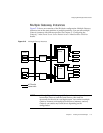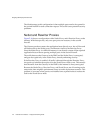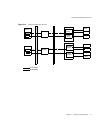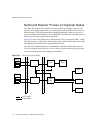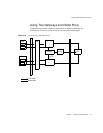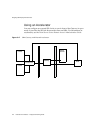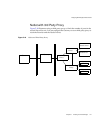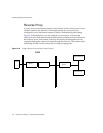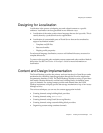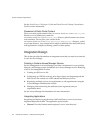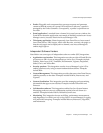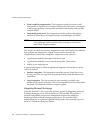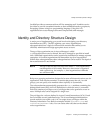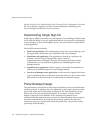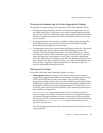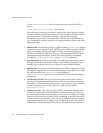Designing for Localization
Chapter 5 Creating Your Portal Design 123
Designing for Localization
Localization is the process of adapting text and cultural content to a specific
audience. Localization can be approached in two different ways:
1. Localization of the entire product into a language that we don’t provide. This is
usually done by a professional service organization.
2. Localization of customizable parts of Portal Server that can be translated to
support localization include:
❍ Template and JSP files
❍ Resource bundles
❍ Display profile properties
For advanced language localization, create a well-defined directory structure for
template directories.
To preserve the upgrade path, maintain custom content and code outside of default
directories. See the Portal Server 6 Developer’s Guide for more information on
localization.
Content and Design Implementation
The Portal Desktop provides the primary end-user interface for Portal Server and a
mechanism for extensible content aggregation through the Provider Application
Programming Interface (PAPI). The Portal Desktop includes a variety of providers
that enable container hierarchy and the basic building blocks for building some
types of channels. For storing content provider and channel data, the Portal
Desktop implements a display profile data storage mechanism on top of an Access
Manager service.
The various techniques you can use for content aggregation include:
• Creating channels using building block providers
• Creating channels using
JSPProvider
• Creating channels using Portal Server tag libraries
• Creating channels using custom building block providers
• Organizing content using container channels



